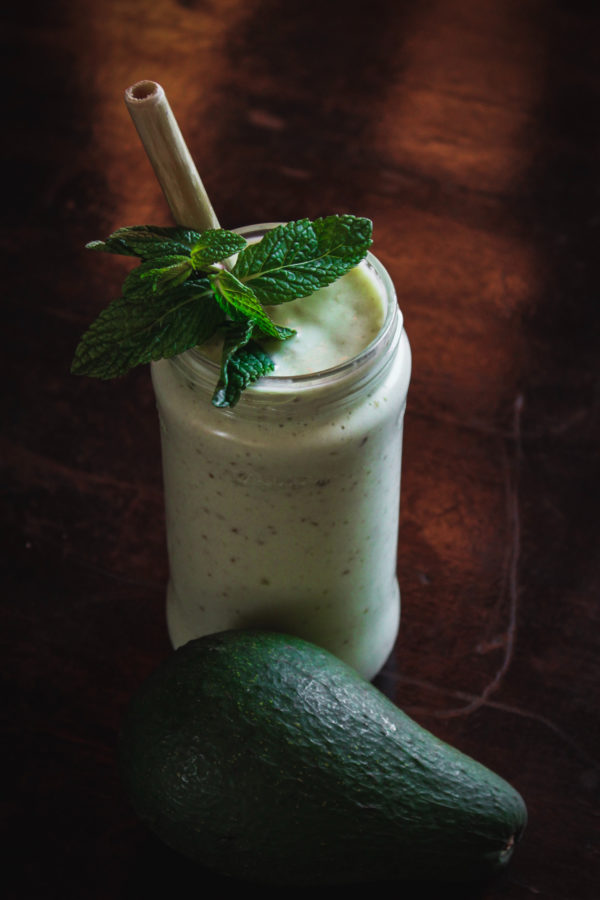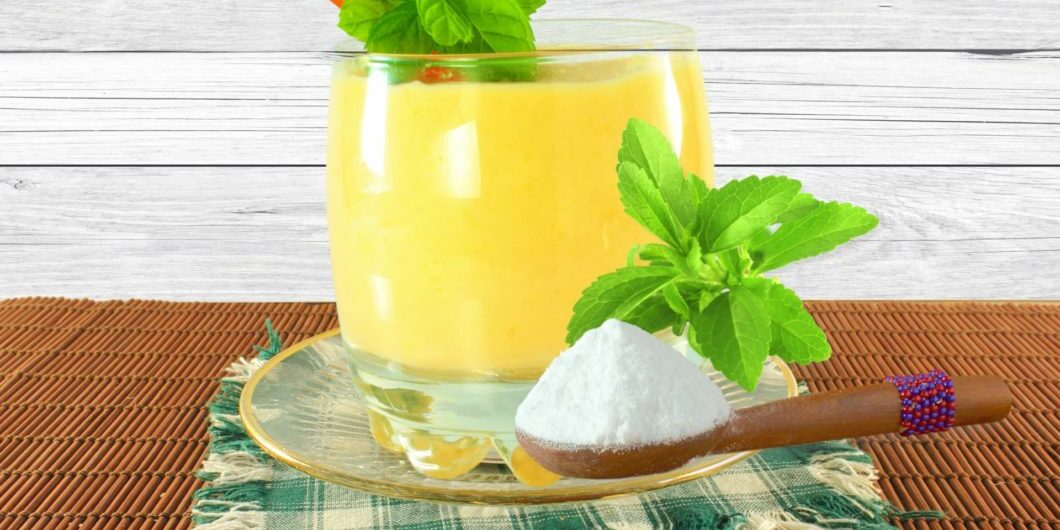Product development • Today, there are more options than ever when it comes to sugar reduction in foods. In this article, we take a closer look at one of the most talked-about in recent years – steviol glycosides. The natural origin and absence of calories make them a very interesting proposition. But there are some things you need to be aware of if you want to use this remarkable ingredient.
Sugar reduction is exciting but complex work. In an article series, we will look at some ingredients that can be used to reduce sugar in foods. How can the ingredients be used and what should be considered? These are questions we should answer!
In this first article, we take a closer look at steviol glycosides.
What are steviol glycosides?
Steviol glycosides belong to the category of high-intensity sweeteners of natural origin. Steviol glycosides are a high-intensity sweetener that comes from the stevia plant. Steviol glycosides are not the same as stevia, although it is often used almost as synonyms. Steviol glycosides are the extract extracted from stevia and are approximately 50-450 times sweeter than regular sugar.
The main reason why steviol glycosides are becoming a popular alternative to sugar is that – unlike sugar – they do not contain any calories nor raise blood sugar.
But in what foods can you reduce sugar with the help of steviol glycosides?
Is it a match?
Steviol glycosides fit well in a variety of foods. They can be used in ice cream, breakfast cereals, sauces, different types of drinks and much more. But it may not be used in all foods; we must comply with the EU rules for the foods in which steviol glycosides are currently approved for use.
These can be found in the Regulation (EC) No 1333-2008 European Parliament and of the Council. You will also find the dosage allowed for each food. The dosage is indicated in accepted daily intake (ADI). It is an estimate of a certain amount that can be consumed daily for a lifetime, without significant health risks. The amount is stated in steviol equivalents (see fact box).
You will also find if a certain food has any restrictions or exceptions. Chewing gum, for example is only permitted with steviol glycosides when no sugar is added.
Here is a simplified list of the foods that steviol glycosides are approved for use with:
- Flavoured fermented milk products including heat treated products
- Edible ices
- Fruits, berries and vegetables in vinegar, oil or brine
- Preparations of fruit, berries and vegetables other than compote
- Various types of jams, marmalades and jellies
- Wide spreads based on fruit, berries and vegetables
- Cocoa and chocolate
- Confectionery products
- Chewing gum
- Decorations, coatings and fillings
- Breakfast cereals
- Fine bakery products
- Processed fish and fishery products including molluscs and crustaceans
- Various forms of table sweeteners
- Soups and broths
- Sauces
- Different forms of diet products
- Fruit nectar, vegetable nectar and similar products
- Flavoured beverages
- Alcoholic beverages
- Different forms of snacks and nuts
- Desserts
- Different forms of dietary supplements
Many to choose from
Now we come to a delicate chapter.
You need to decide what kind of steviol glycoside you want to use; there are several varieties.
There are 12 different types of steviol glycosides that are approved for use in foods, of which Rebaudiana A (which is often abbreviated as Reb A) belongs to the most used. It is also relatively affordable.
Recently, new alternatives have emerged such as Rebaudiana M (which is often abbreviated as Reb M). There is a small proportion of Reb M in the stevia plant, making it more expensive than Reb A. Reb M is more reminiscent of sugar and lacks the liquorice-like aftertaste found in Reb A. Therefore, no other ingredients that mask the aftertaste are needed to the same extent.
Does this mean that Reb M is the best option and that you should always choose it over Reb A or any of the others?
No, it’s not that simple. It depends on many factors, such as the type of food you want to use the steviol glycosides in, other possible ingredients, taste experience requirements and pricing.
To facilitate this decision-making process, a working method is needed in which you systematically arrive at which steviol glycosides are suitable for your particular food. This means that you will probably have to do extensive tests to find the right balance in terms of sweetness, taste and mouthfeel. It must also be investigated whether the product can be manufactured on an industrial scale and that the product maintains a stable quality from manufacturing to end consumer.
Steviol glycosides and pastries
Unlike some artificial sweeteners (such as aspartame), steviol glycosides can withstand heat. Therefore, it is technically possible to use steviol glycosides in, for example, buns, cakes and other items that must be cooked in the oven. But it is not included in EC Directive 1333-2008. Thus, it is not allowed in the EU.
The reason for this is according to the EU that there has never been an approved substitute for sugar in baked goods. Another reason is the risk of over-consumption of steviol glycosides if they were in buns, cakes and the like. The exception is essoblaten and wafers – niche products, which are usually very thin and which the average consumer does not eat very much of.
Bulk Ingredients
Steviol glycosides often need buddies to get the job done. The sweetness is there, no doubt about it – but steviol glycosides lack the sugar’s volume (bulk) and many of its functional properties. Sugar creates a lovely texture and mouthfeel. Therefore, any form of bulk ingredient becomes extra important if you choose to replace the sugar altogether. Sugar and glucose syrup are bulk ingredients (more precisely: bulk sweeteners) but they also have negative effects that we do not want.
What alternatives are there?
There are plenty of ingredients and sweeteners that go well with steviol glycosides.
More friends
Bulk ingredients also include different types of sugar alcohols and fibres. Steviol glycosides fit well with all kinds of bulk ingredients, sugars as well as fibres. Sugar alcohols contain fewer calories and do not affect blood sugar levels as much as sugar.
A successful example is mixing steviol glycosides with the sugar alcohol erythritol. In the US, it has become common to combine these two into drinks. Then you also get an end product that is completely calorie-free. 3.5 per cent of erythritol is the permissible content in the US. In Europe, the maximum content is 1.6%.
Because some steviol glycosides have a liquorice-like aftertaste, there may be a need to neutralize the taste experience. It is therefore relatively common to combine steviol glycosides with fructoses such as corn syrup, fruit juices and honey.
Steviol glycosides also go hand in hand with artificial sweeteners such as sucralose and acesulfame K and sweeteners of natural origin such as mogrosides.
A compromise

As you now know, steviol glycosides work well with regular sugar. And although we may actually want to get rid of the sugar altogether, in some products there may be a point in combining steviol glycosides with sugar. Especially in cases where the amount of calories is not the most important, but where for various reasons we want to stay away from artificial high-intensity sweeteners.
It can be a successful compromise. The calorie level decreases slightly, but the functional properties of the sugar are utilized. The steviol glycosides, in turn, contribute with their image – that they are seen by consumers as a ‘natural’ ingredient.
Srdjan gets the last word
We let our expert and food engineer Srdjan Solaja give his views on what it is like to work with steviol glycosides.
– Steviol glycosides can be combined with regular sugar. But the question you have to ask yourself is what you want to achieve. If you want to reduce the amount of calories, it is better to skip the sugar completely, says Srdjan Solaja.
According to Srdjan, working with steviol glycosides is a complex matter. It takes a lot of experimentation and it is laborious to find the right taste and the right bulk.
– Some applications can be relatively easy to work with, while others can be incredibly complicated. Steviol glycosides are very sweet. Therefore, it does not require large quantities, which is a good thing. But this is an ingredient that places great demands on dosing and mixing techniques, says Srdjan Solaja.
Srdjan’s three tips
- Steviol glycosides are several hundred times sweeter than regular sugar. It is therefore important to find the right dosage. Both taste and sweetness will be negatively affected if you fail.
- Steviol glycosides are completely calorie-free and do not raise blood sugar. They are especially suitable for people with diabetes or obesity but pay attention to other less suitable friends in the recipe.
- Prepare for the use of bulk. If you remove sugar in, for example, jams or desserts and replace it with steviol glycosides, you must add some form of bulk ingredient to offset the sugar volume.
A helping hand
You may want to use steviol glycosides but think of it as complicated and resource-intensive work. Don’t worry – please contact us. We work with both ready-made applications and tailor-made solutions. We help you along the way based on your needs.
Please, share this article if you liked it.
[et_social_share]







